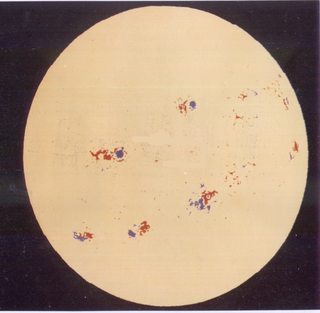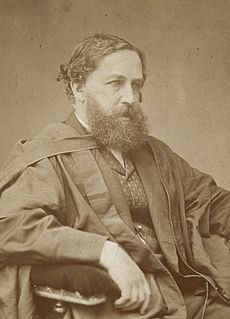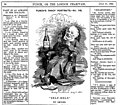
The Maunder Minimum, also known as the "prolonged sunspot minimum", is the name used for the period around 1645 to 1715 during which sunspots became exceedingly rare, as was then noted by solar observers.
Timeline of solar astronomy

Space weather is a branch of space physics and aeronomy, or heliophysics, concerned with the time varying conditions within the Solar System, including the solar wind, emphasizing the space surrounding the Earth, including conditions in the magnetosphere, ionosphere, thermosphere, and exosphere. Space weather is distinct from but conceptually related to the terrestrial weather of the atmosphere of Earth. The term space weather was first used in the 1950s and came into common usage in the 1990s..
In 1769, during solar cycle 2, Scottish astronomer Alexander Wilson, working at the Macfarlane Observatory, noticed that the shape of sunspots noticeably flattened as they approached the Sun's limb due to solar rotation. These observations showed that sunspots were features on the solar surface, as opposed to minor planets or objects above it. Moreover, he observed what is now termed the Wilson effect: the penumbra and umbra vary in the manner expected by perspective effects if the umbrae of the spots are in fact slight depressions in the surface of the photosphere. The magnitude of the depression is difficult to determine, but may be as large as 1,000 km.

Solar minimum is the period of least solar activity in the 11 year solar cycle of the Sun. During this time, sunspot and solar flare activity diminishes, and often does not occur for days at a time. The date of the minimum is described by a smoothed average over 12 months of sunspot activity, so identifying the date of the solar minimum usually can only happen 6 months after the minimum takes place. Solar minima are not generally correlated with changes in climate but recent studies have shown a correlation with regional weather patterns.

Solar rotation varies with latitude. The Sun is not a solid body, but is composed of a gaseous plasma. Different latitudes rotate at different periods. The source of this differential rotation is an area of current research in solar astronomy. The rate of surface rotation is observed to be the fastest at the equator and to decrease as latitude increases. The solar rotation period is 24.47 days at the equator and almost 38 days at the poles.
In economics, the term sunspots usually refers to an extrinsic random variable, that is, a random variable that does not affect economic fundamentals. Sunspots can also refer to the related concept of extrinsic uncertainty, that is, economic uncertainty that does not come from variation in economic fundamentals. David Cass and Karl Shell coined the term sunspots as a suggestive and less technical way of saying "extrinsic random variable".

Alexander Leonidovich Chizhevsky (Russian: Алекса́ндр Леони́дович Чиже́вский was a Soviet-era interdisciplinary scientist, a biophysicist who founded "heliobiology" and "aero-ionization". He also was noted for his work in "cosmo-biology", biological rhythms and hematology." He may be most notable for his use of historical research techniques to link the 11-year solar cycle, Earth’s climate and the mass activity of peoples.

Solar Cycle 24 is the 24th solar cycle since 1755, when extensive recording of solar sunspot activity began. It is the current solar cycle, and began in December 2008 with a smoothed minimum of 2.2. Activity was minimal until early 2010. It reached its maximum in April 2014 with a 23 months smoothed sunspot number of only 81.8, comparable to those of cycles 12 through 15. Reversed polarity polar active sunspot regions in December 2016, April 2018, and November 2018 indicate that a transitional phase to solar cycle 25 is in process.

Solar cycle 20 was the twentieth solar cycle since 1755, when extensive recording of solar sunspot activity began. The solar cycle lasted 11.4 years, beginning in October 1964 and ending in March 1976. The maximum smoothed sunspot number observed during the solar cycle was 156.6, and the starting minimum was 14.3. During the minimum transit from solar cycle 20 to 21, there were a total of 272 days with no sunspots.
A climate oscillation or climate cycle is any recurring cyclical oscillation within global or regional climate, and is a type of climate pattern. These fluctuations in atmospheric temperature, sea surface temperature, precipitation or other parameters can be quasi-periodic, often occurring on inter-annual, multi-annual, decadal, multidecadal, century-wide, millennial or longer timescales. They are not perfectly periodic and a Fourier analysis of the data does not give a sharp spectrum.
Solar cycle 25 is the upcoming and 25th solar cycle since 1755, when extensive recording of solar sunspot activity began. Consensus has not formed over the cycle's start date and expected strength. According to some scientists, it is expected to begin in late 2019 and continue through 2030. General agreement holds that it will be weaker than average. Organizations such as the International Solar Energy Society (ISES) and NOAA's Space Weather Prediction Center (SWPC) have not issued or endorsed a forecast for the cycle until as late as 2019.
Solar observation is the scientific endeavor of studying the Sun and its behavior and relation to the Earth and the remainder of the Solar System. Deliberate solar observation began thousands of years ago. That initial era of direct observation gave way to telescopes in the 1600s followed by satellites in the twentieth century.

Solar phenomena are the natural phenomena occurring within the magnetically heated outer atmospheres in the Sun. These phenomena take many forms, including solar wind, radio wave flux, energy bursts such as solar flares, coronal mass ejection or solar eruptions, coronal heating and sunspots.

The Brückner-Egeson-Lockyer cycle is a climatic cycle of approximately 30-40 years. Originally described on the basis of periodic flooding events in southern Australia that were correlated with sunspot activity by Charles Egeson. It was supported by William J.S. Lockyer and later by Eduard Brückner. The initials "BEL" or paratridecadal cycles have since been suggested to explain various other long-term cycles including those affecting economics, human physiology, and historical events.
William James Stewart Lockyer was an English astronomer and physicist. His work included studies on sunspot cycles and is remembered for what is now known as the Brückner-Egeson-Lockyer cycle.














